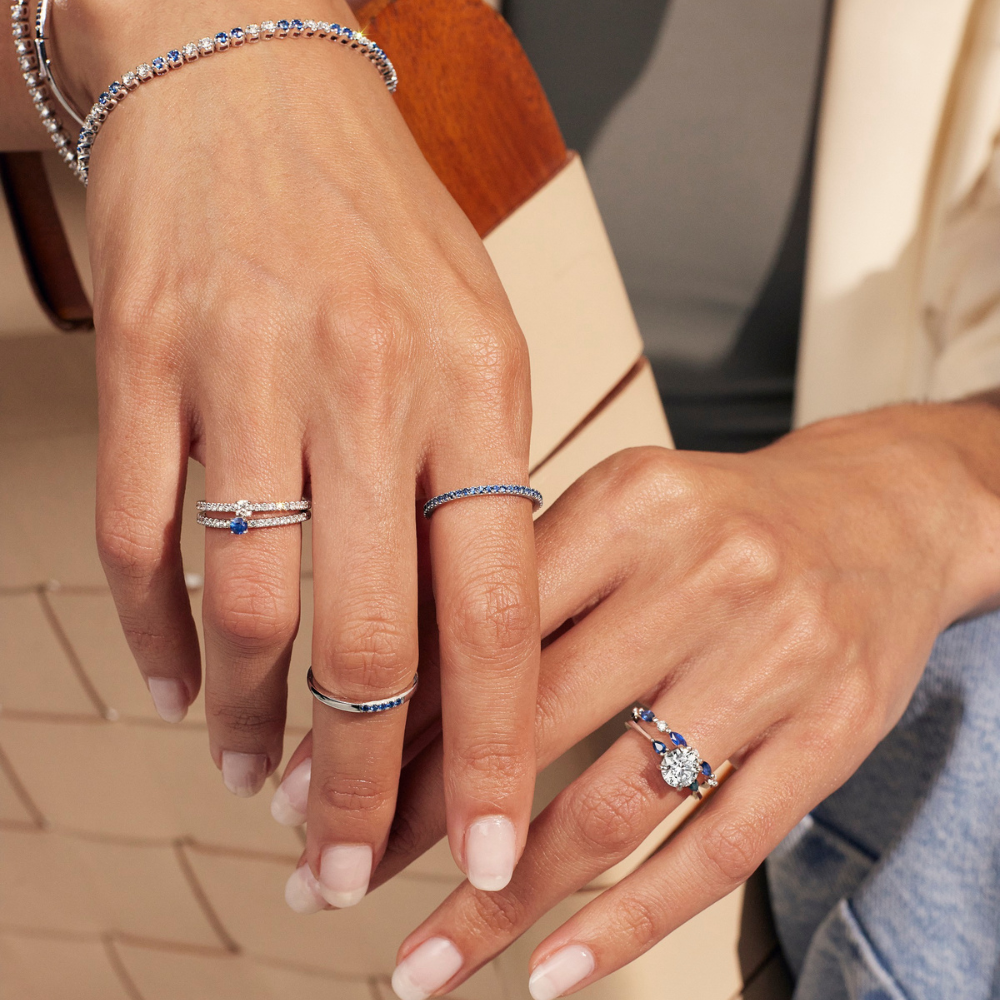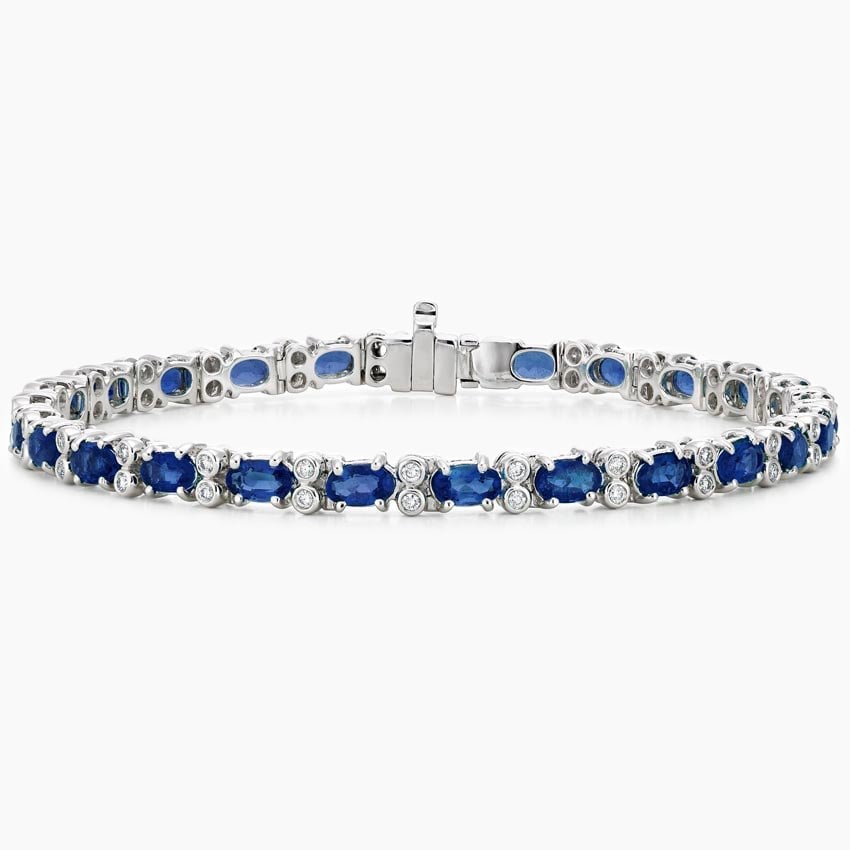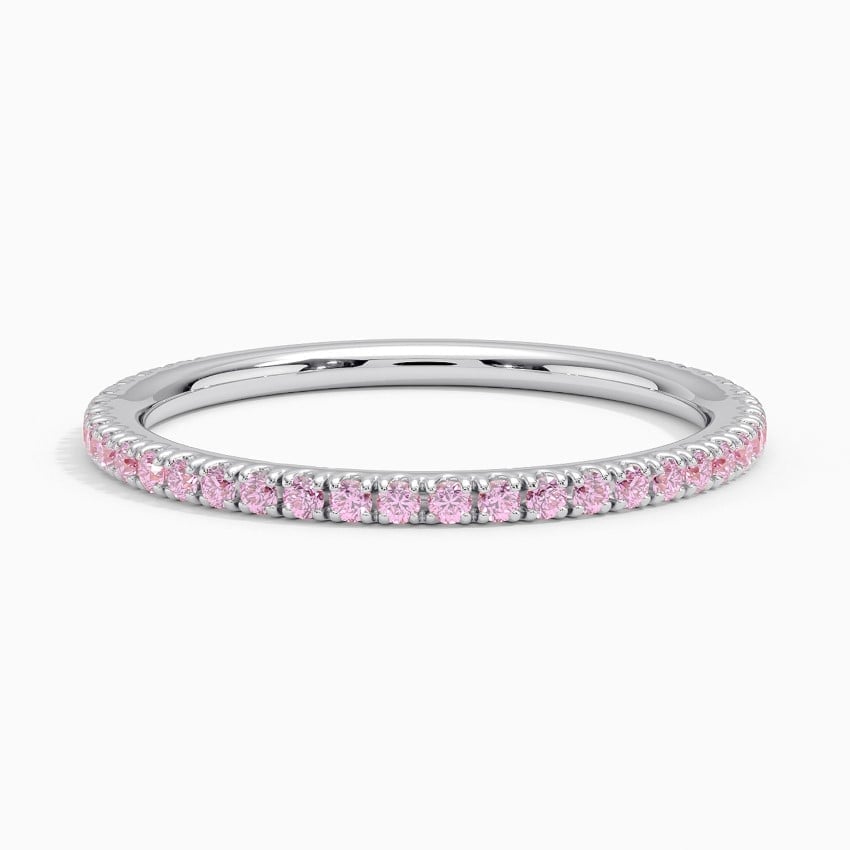The sapphire is the birthstone for September. Cherished for centuries, this gemstone is celebrated not only for its aesthetic appeal but also for its symbolic meanings and properties.
What is the September birthstone?
The September birthstone is a gemstone that embodies elegance, sophistication, and enduring beauty. Its rich history, vibrant color, and symbolic meanings make it a cherished choice for both personal style and gifting. Whether you’re looking to celebrate a September birthday or simply appreciate this stunning gemstone, sapphire jewelry offers timeless elegance. For more in-depth information about the sapphire gemstone, visit our sapphire guide.
September Birthstone Color
Sapphires are a type of corundum mineral and are most famous for their deep blue shades, though they can also be found in other colors such as pink, yellow, and green. The name “sapphire” comes from the Latin word “sapphirus” and the Greek word “sappheiros,” both of which mean “blue stone.”
September Birthstone History
The September birthstone has been treasured for thousands of years, seen as as a symbol of wisdom, virtue, and good fortune. With a history dating back to ancient civilizations, they were revered for their protective qualities. Their enduring popularity persists, evidenced by iconic pieces such as Princess Diana’s engagement ring. Culturally significant across many cultures and traditions, sapphires have inspired literature and art, embodying themes of truth, fidelity, and divine favor.
September Birthstone Meaning
For centuries, this birthstone has carried symbolic meanings of nobility, honesty, integrity, and loyalty across various cultures. In ancient Greece and Rome, rulers believed that blue sapphires had protective qualities and would shield them from danger. During the Middle Ages, sapphires represented heaven. Now, sapphires are widely recognized as symbols of royalty.
Where is the September Birthstone Found?
Brilliant Earth sources sapphires from Australia and Sri Lanka, but they can also be found in Madagascar, India, and Colombia.
September Birthstone Durability
Sapphires are prized for their remarkable hardness. Ranking 9 on the Mohs scale of hardness, they are one of the hardest gemstones, second only to diamonds. This makes them an excellent choice for all types of jewelry, including rings, necklaces, bracelets, and earrings.
September Birthstone Cleaning & Care
Sapphires are relatively low-maintenance gemstones, but they still require gentle handling and occasional cleaning to maintain their brilliance. Avoid exposure to harsh chemicals and extreme temperatures, and regularly clean your sapphire jewelry with a soft brush and mild soap solution.
September Birthstone Jewelry
From rings to bracelets, sapphires add a touch of refinement to any piece of jewelry. Browse a few of our September birthstone jewelry offerings below.
Azura Sapphire and Diamond Bracelet
Luxe Ballad Pink Sapphire Ring
September Birthstone FAQs
How many birthstones does September have?
September has one birthstone, the sapphire.
What month is the sapphire birthstone?
September is the month associated with the sapphire birthstone.
Still interested in learning more about birthstones? Check out our other Birthstone Guides: January, February, March, April, May, June, July, August, September, October, November, December, Birthstone Chart, Birthstone Colors, Birthstone Meanings, Most Expensive Birthstones, What Is My Birthstone?, What Is the Rarest Birthstone?, What Months Have Two or More Birthstones?, Zodiac Birthstones










My birthday is in September. I collect jewelry made with different colored sapphire. My favorites are a color changing ring and a bracelet with 26 blue star sapphire rounds!
Sapphires have always been my favorite stone!! I had a beautiful ring surrounded by diamonds I found at a pawn shop .. Paid only $400! Went to get it appraised it was worth $2000! Brcause of the cut style and apparently it was extremely old!! Omg! I miss that ring!!
What is October’s gem stone?
Love dark blue sapphires..birthstone of someone special
This is my favorite Stone and yes it is my birthstone so pretty I used to have the Star Sapphire shaped in a heart someone stole it out of my locker at gavit High School during swimming class. ???
I love the blue sapphire
My birthstone is Sapphire. I favor the deep blue hue. The peach colored stone is very brautiful! The 15 facts about the various colors of the sapphire stone are amazing! Great to know.
I am October child . A day before Halloween. I adore green Jade and sterling. Crown jewels are also nice
Good article, however sapphires can often be a different hardness even within the one stone, therefore it is not only possible but probable that a sapphire can scratch another sapphire just like a diamond can.
love it
just kidding haha you thought I was for real
jinks
so pretty
love it
Fxxvfgv chug cffc
Sapphire my Birthstone
kys
Sapphires are my birthstone
I’m only 14 but I want one!!!!!!!!!
Love Them!!!!!!
Sapphires are beautiful